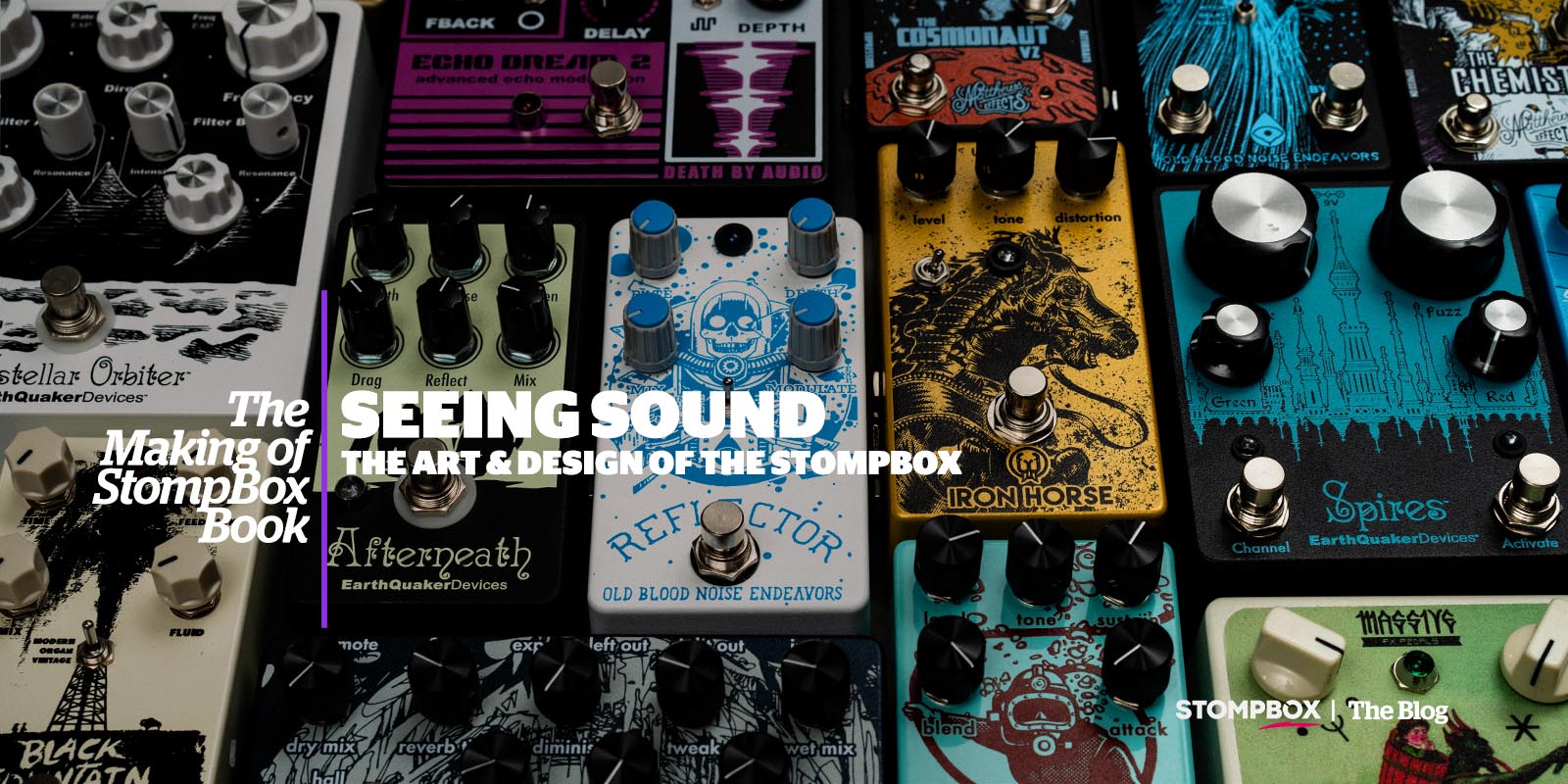Seeing Sound | The Art & Design of the Stompbox | Book Feature Preview
Imagine visiting an art museum and discovering no paintings or sculptures. Instead, it’s filled with a rainbow of scratched, scuffed guitar pedals emblazoned with eye-popping, humorous, and sometimes cheeky graphics and some wild fonts. Confronted by this aesthetic overload, you realize guitar pedals aren’t just utilitarian. The work and creativity that went into the visual presentation of these little metal boxes elevate them to the status of objet d’art. While you’re musing over this, your tour guide arrives, and it’s none other than Josh Scott, creator and president of JHS Pedals. You couldn’t be in better hands.
In addition to running a renowned pedal company, Josh hosts the YouTube series The JHS Show which has garnered millions of views from musicians and guitar fanatics. He’s also a public speaker focused on the history and stories surrounding guitar technology. It all started when he accidentally fixed a broken guitar pedal, subsequently becoming fascinated with electrical engineering and circuit design and eventually launching his own pedals.
“Everyone loves going into the candy store and looking at all the bright colors, right? It just makes people happy.”
Now, he’s brought his years of technical expertise, aesthetic eye, and love of history to a lavish feature in the Stompbox book. Seeing Sound: The Art and Design of the Stompbox is the closest you’ll get to a fantasy museum tour from the comforts of your own couch.
“My first interaction with Josh came after I received an email from him, claiming that he might be one of the biggest pedal collectors out there,” testifies Eilon at the beginning of their friendship. “Of course, I was intrigued and swiftly reached out to include him in the impressive roster of stompbox collectors featured in Vintage & Rarities.
After my first visit to Josh’s “pedal museum” (the JHS HQ) in Kansas City, Missouri, our connection strengthened, and I learned more about his obsession and deep love for guitar pedals,” Eilon continues. “I was so impressed with his devotion and endless work to serve the pedal community, so I suggested to our editor, Dan Epstein, that we add him to the Stompbox team as a contributing writer. In perfect timing, we were looking for the right person to write an art and design feature, and Josh was the perfect fit.
Many articles are out there talking about the origins of effects pedals,” concludes Eilon, “but it’s much rarer to find a piece of this depth focused on visual design.”
Seeing Sound is a chronological timeline of pedal art and design accompanied by gorgeous, hyper-detailed photos narrated by a true expert in the field. Josh Scott, together with Angela Riechers, program director of Graphic Design at the University of the Arts in Philadelphia, trace the history of pedal aesthetics from Groovy London in 1966 to contemporary California, from drably utilitarian to graphic collector’s pieces. The feature reveals how manufacturers like MXR, and BOSS used branding to color code different sounds, translating the aural into a visual language, which became de facto in the industry. It also details the experimental design that arose as a reaction to 80s-era standardization, with what Josh defines as The Lamb Series. “The Lamb series of DOD effects strayed as far from conventional branding as possible,” Josh explains. “They had a look that somehow visualized the all-too-familiar sound of the 56k modem chirping away violently at the phone line.”
Seeing Sound also explores different painting and screen-printing techniques utilized by manufacturers like ZVEX, which pioneered covetous hand-painted models in the early 1990s, to Walrus and Earthquaker, who took custom artwork to a league of its own. “Everyone loves going into the candy store and looking at all the bright colors, right? It just makes people happy,” tells Riechers. “That is the same reaction many musicians have when they enter the guitar store. They see this wall of beautifully colored things and say, ‘That makes me happy!'”
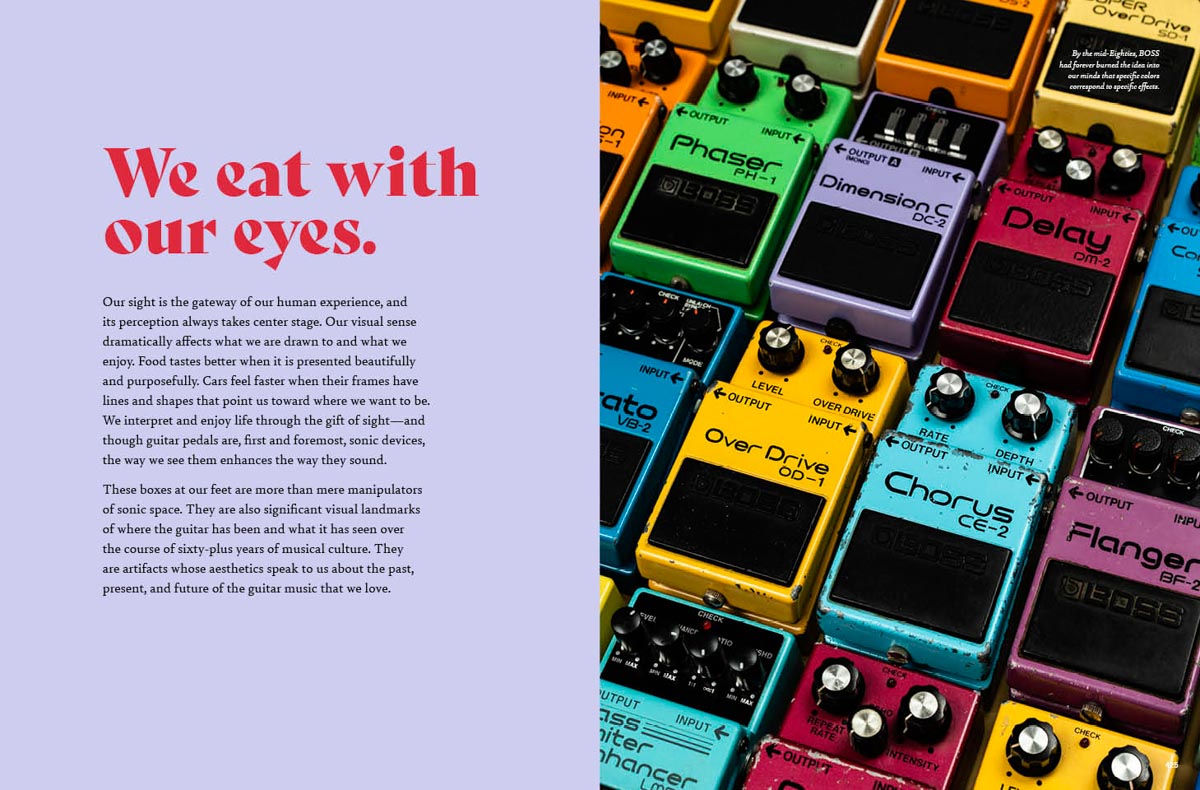
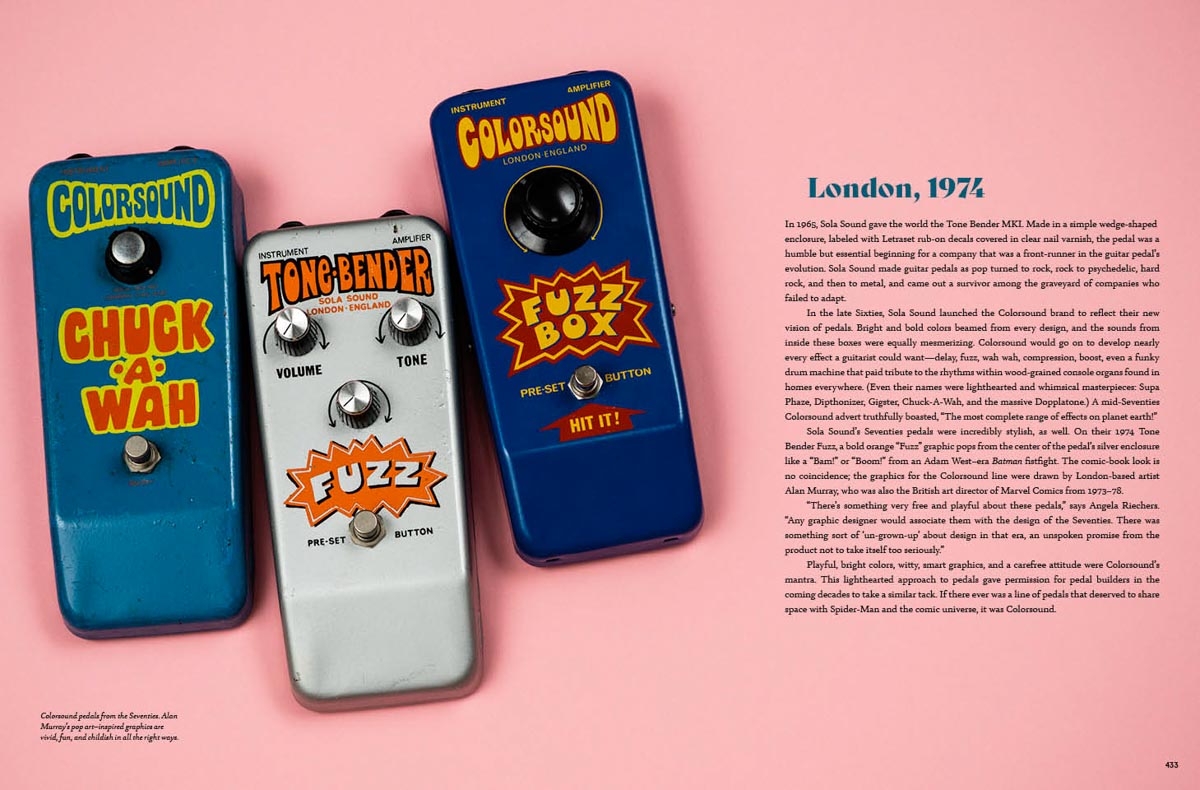
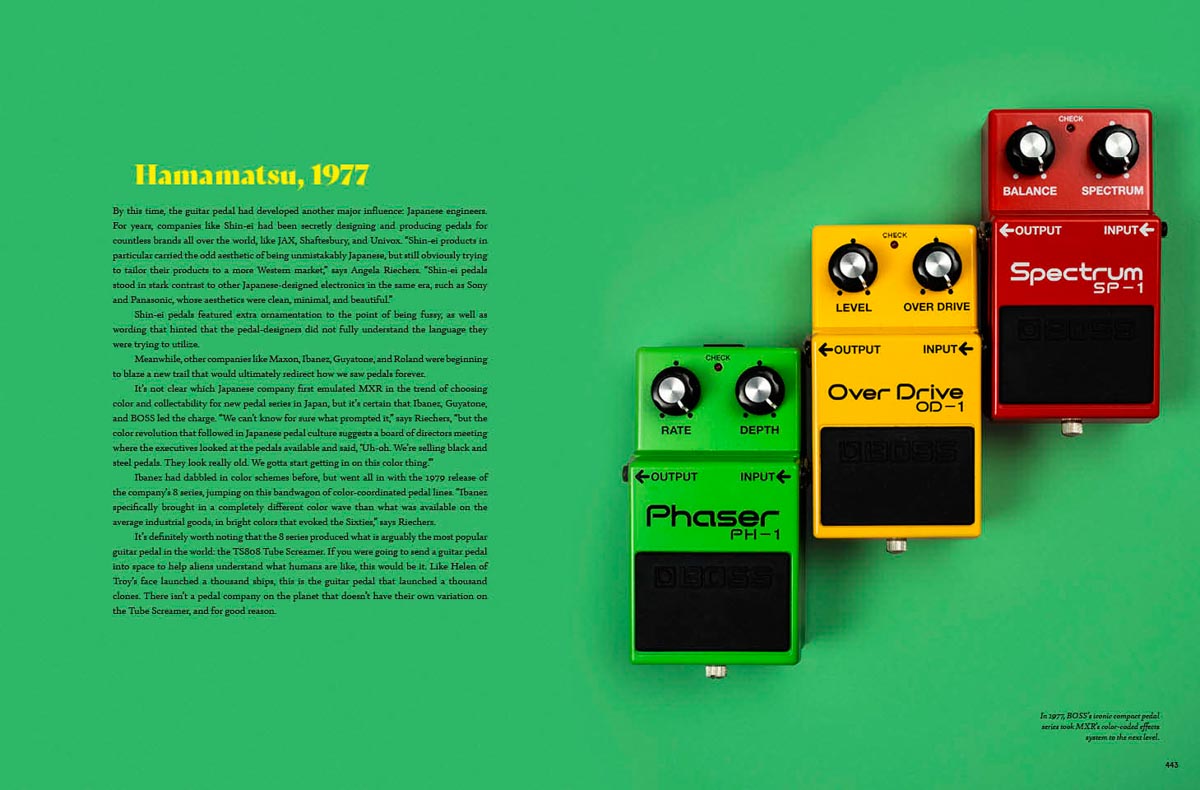
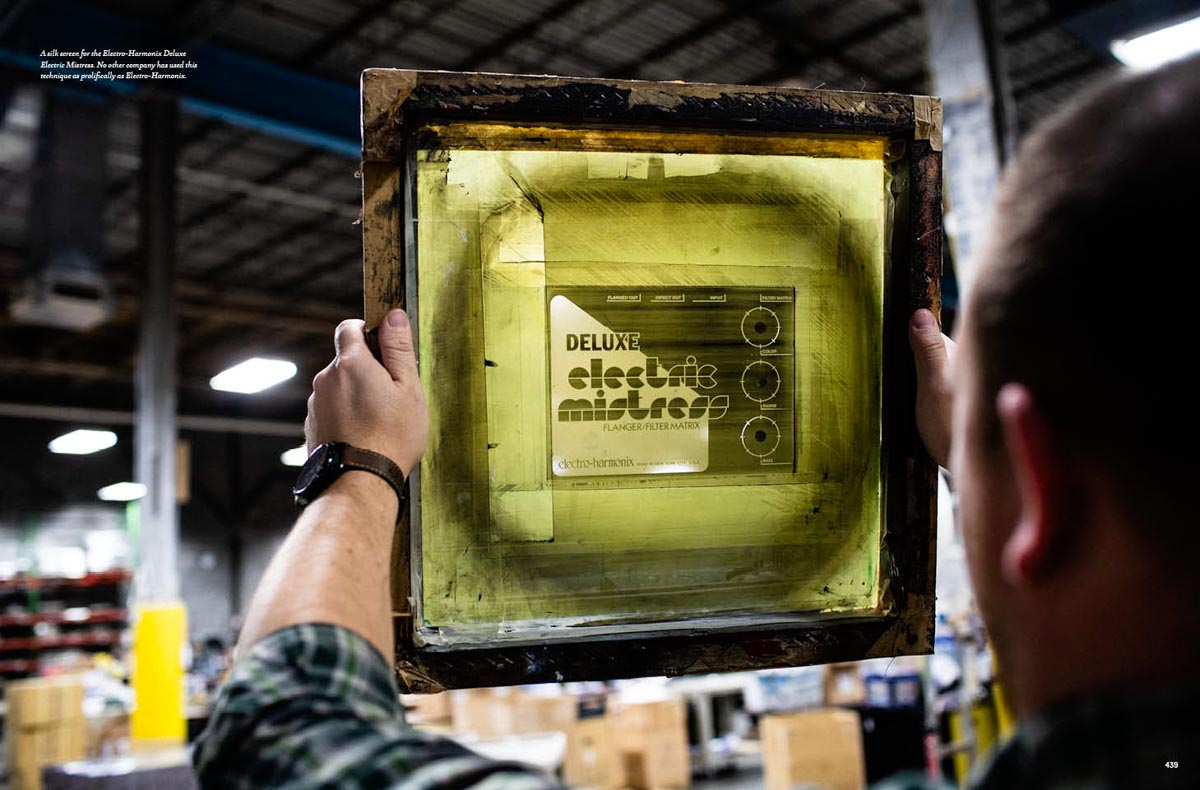
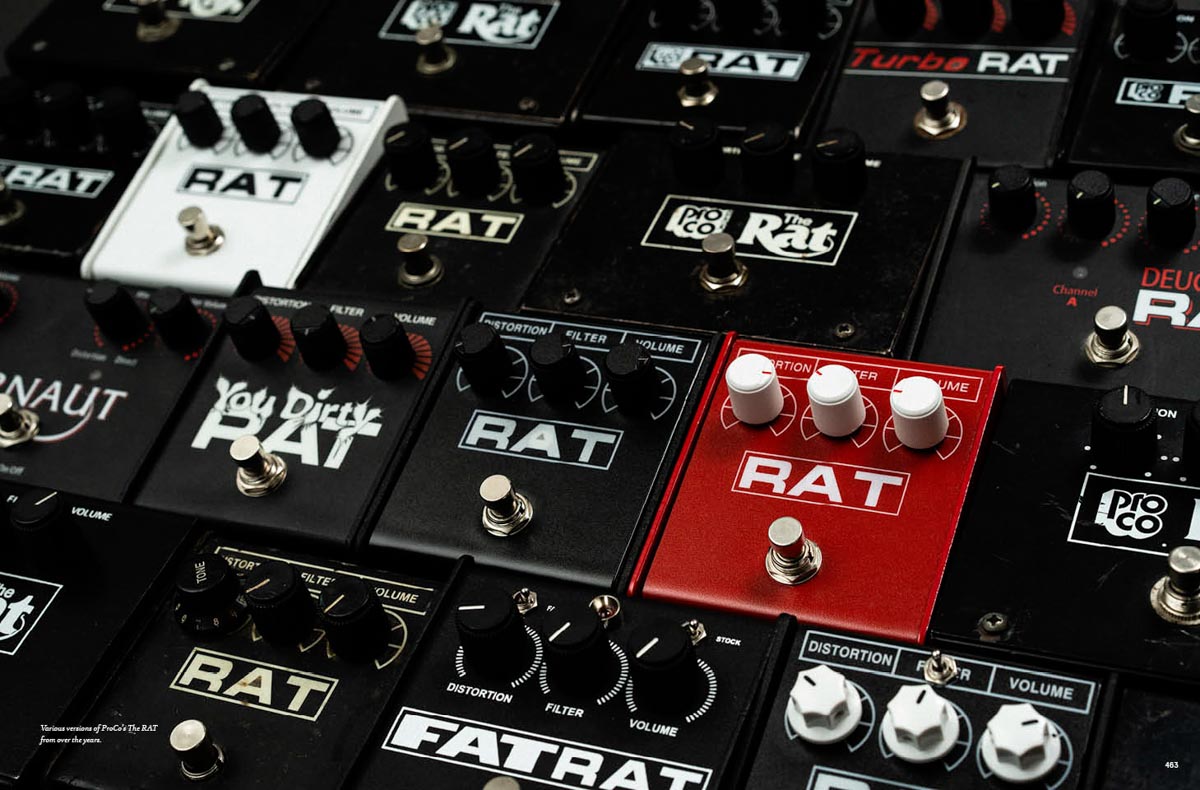
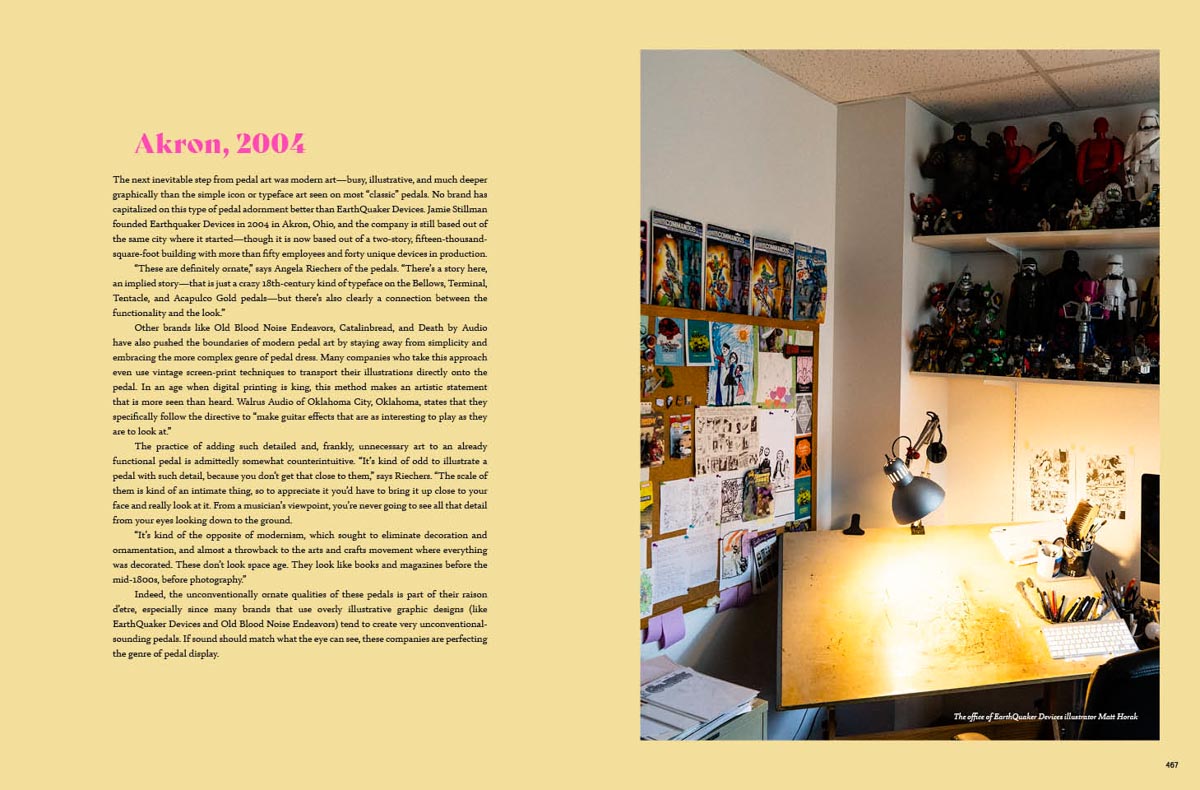
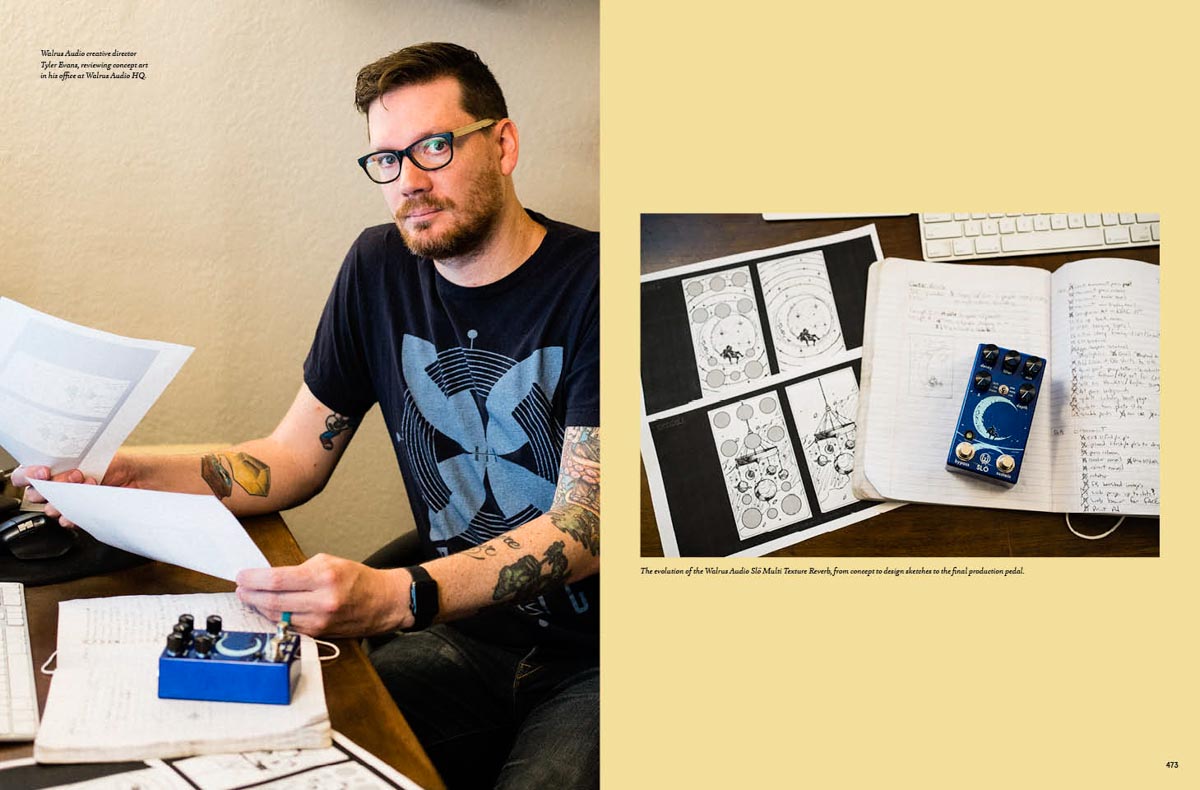
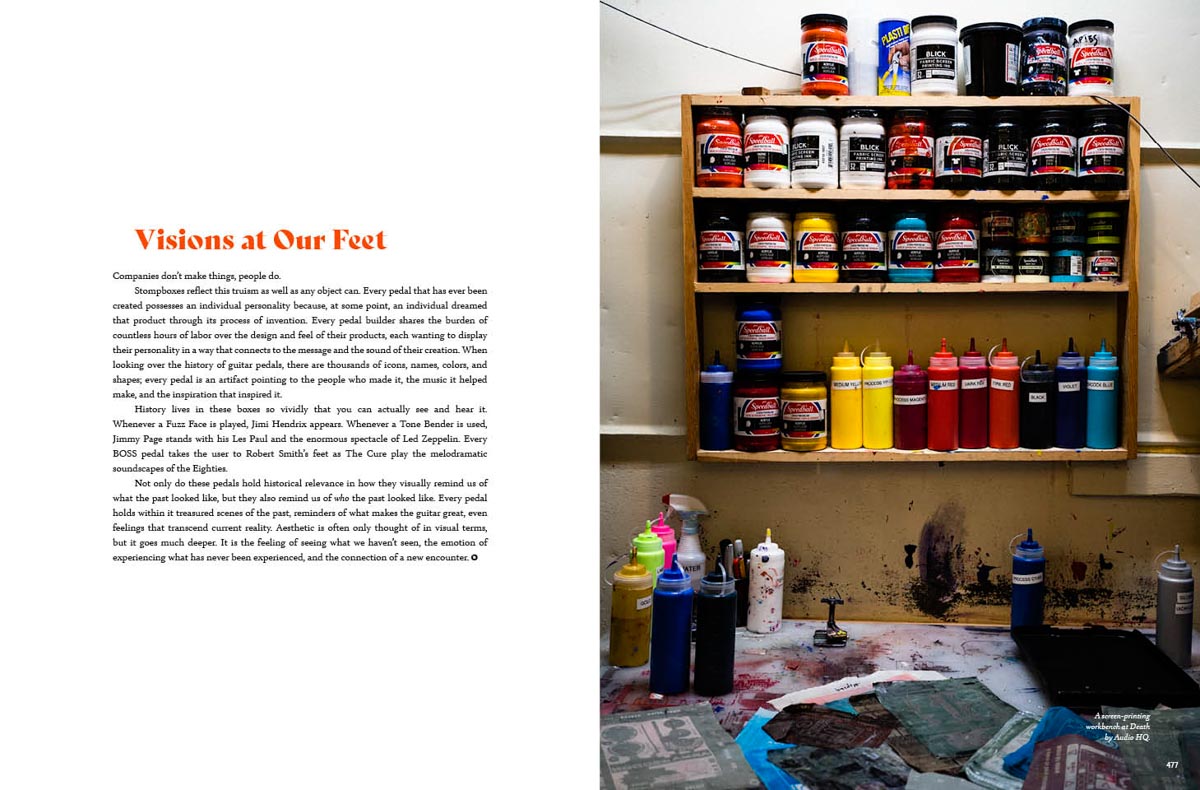

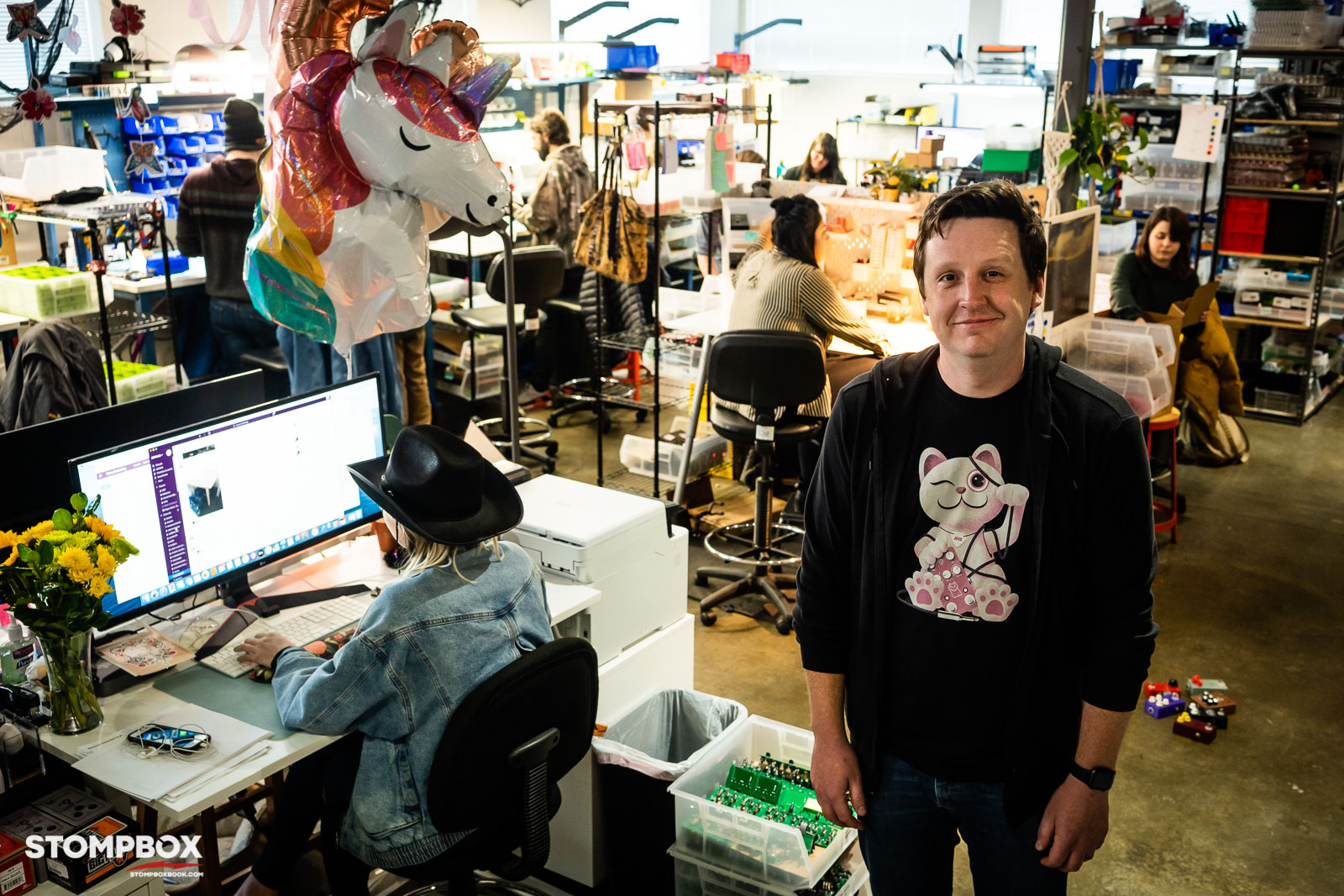
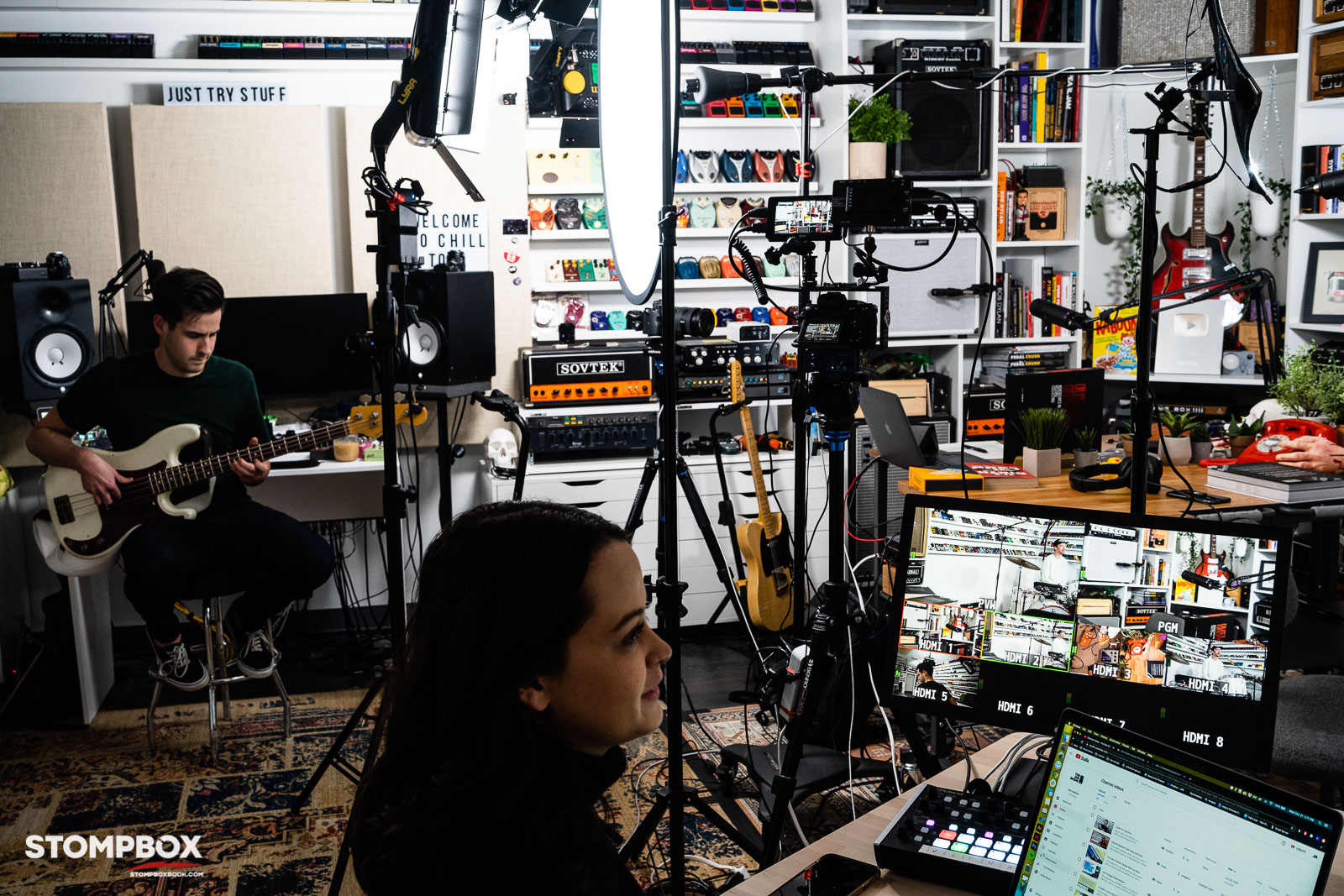
Check out the full Seeing Sound feature in the Stompbox Book and The Brick.
The Brick, a deluxe bundle of Stompbox and Vintage & Rarities books, is now back in a limited run.
